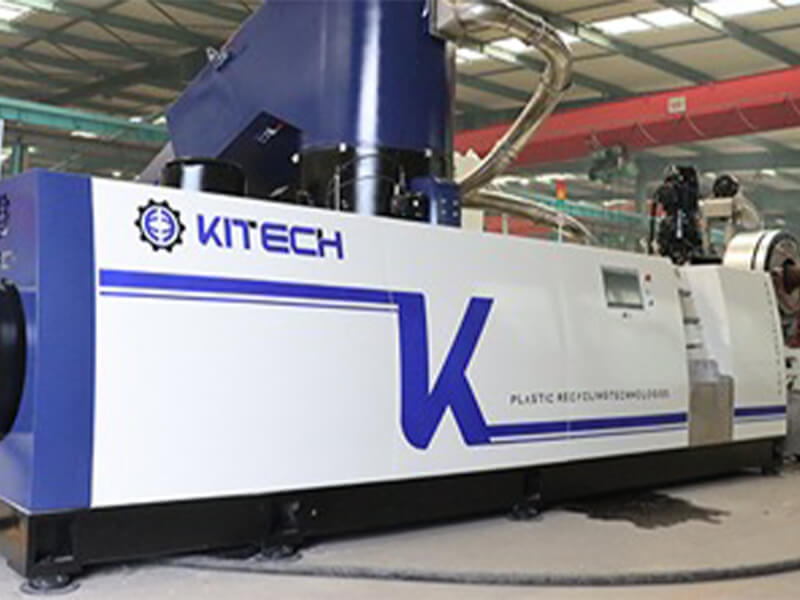JIANGSU KITECH MACHINERY CO.,LTD
Thermoplastic resin and various additives are mixed and granulated and then added to the plastic granulator. The material is subjected to mechanical shear force, friction heat and external heating in the barrel. It melts and plasticizes and is pushed forward by the screw rotation at the same time. Squeeze it down to make it a dense melt. The melt then passes through the filter plate and different types of forming dies to become a profile with a constant cross-sectional shape, and is cooled and shaped to obtain the product.

The molding method of plastic products is determined according to the shape of the product. Some product shapes can only be obtained by one molding method. Some can be obtained by two or more molding methods. Extrusion molded products are produced continuously, and the axial cross-sectional shape of the products is the same. Since it is a continuous operation molding, the production efficiency is high and the product quality is stable. Extrusion molding is an intermittent operation to produce products. The shape of the products can be made into almost any shape. The products produced by calendering can only be films and sheets.
In addition to the processing and molding process, the production of plastic products also requires mechanical processing, modification and assembly. Mechanical processing refers to drilling, turning, milling and other processing on the formed workpiece to complete operations that cannot be achieved or completed by the forming process; the purpose of modification is to beautify the appearance of the product or achieve other purposes; assembly is sufficient to complete each completed workpiece The process of connecting or assembling components to form a complete product. To make a good plastic product, the general procedures are:
① Select materials or formulas;
② Determine the molding process;
③ Design the product cabinet and mold drawings and process them;
④ Determine the best process conditions and test run;
⑤ Test the product performance;
⑥ Adjust , Improve formula, mold and process conditions, etc.;
⑦ Large-scale and stable production.